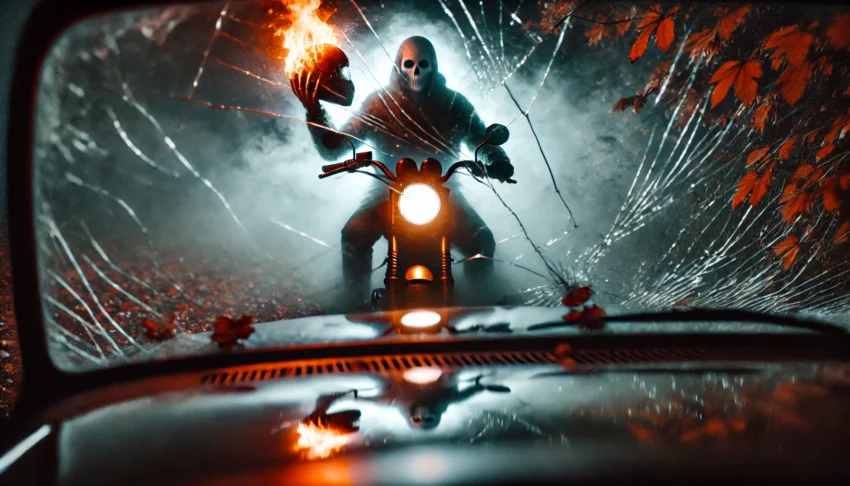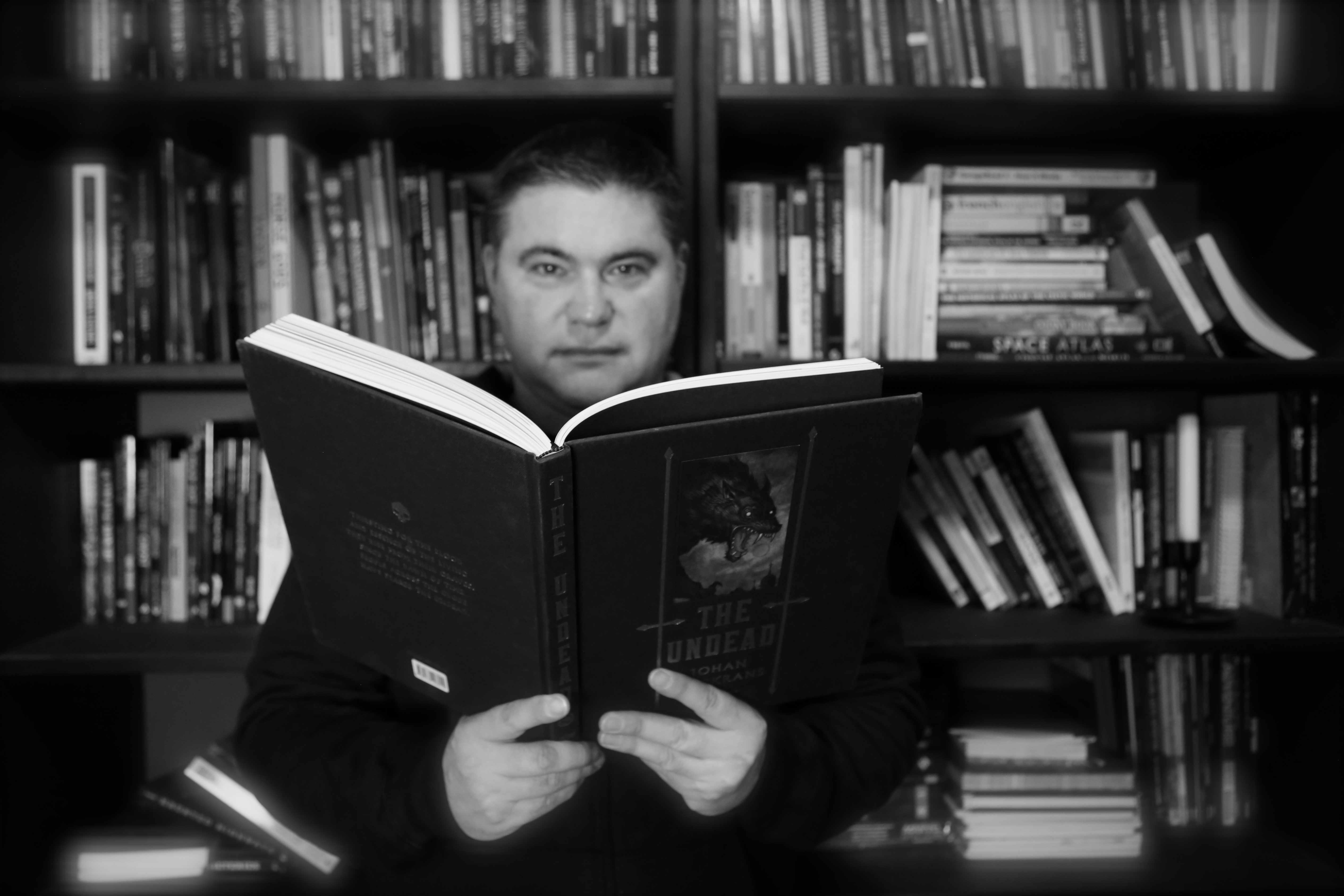
The Headless Horseman | A Classic American Urban Legend
The Legend of Sleepy Hollow remains a favorite urban legend from the Revolutionary War, but there’s more to the legend than the chase. Get the history behind Hessian soldiers and a modern day story after the jump.
A Modern Tale Of The Horseman
Fog rolled over the highway. It was thick, swirling like smoke in the headlights. Jack, a college freshman, drove cautiously. He didn’t like taking these back roads, but it was late, and the highway was faster. The leaves, bright reds and oranges, blew across the asphalt. His tires crunched over them as he drove through the autumn night.
Out of nowhere, the roar of a motorcycle echoed in the fog. Jack squinted into his rearview mirror. A single headlight appeared, closing in fast. Too fast.
The bike swerved left, then right, trying to overtake him. Jack’s heart pounded. He gripped the steering wheel tight. The rider was on him now, barely an inch away, his engine growling like a wild beast.
Then Jack saw it. The rider had no head.
His blood turned to ice. He blinked, thinking it was a trick of the fog, but no. The rider was headless, his black leather jacket gleaming under the moonlight. Panic surged through Jack as the motorcyclist swerved again, forcing him toward the shoulder.
Jack tried to speed up, but the motorcyclist was relentless, inches from his bumper. The fog thickened, swallowing the world around them. Jack could barely see the road anymore.
And then, it happened. The rider raised his hand. He was holding a helmet. A black helmet with something inside.
Jack’s eyes went wide. He couldn’t look away. The rider hurled the helmet straight at the windshield. It smashed into the glass with a deafening crash. Jack screamed, yanking the wheel.
The car skidded off the road. Tires screeched. The car slammed into a tree, jerking Jack forward. Everything went black.
When he woke, the night was still. The motorcycle? Gone. The fog? Thicker than ever. His car? Crumpled, the windshield shattered. He touched his face. Blood. His heart pounded in his ears, his breath ragged.
Lights flashed in the distance. Red and blue. The police arrived first. Then the EMTs. They checked him over, asked what happened.
Jack could only mumble. “The rider… he had no head.”
They didn’t believe him. How could they? There was no sign of a motorcycle. No tire marks on the road. But they all saw the shattered windshield. The shape. The impact.
It looked just like a helmet had hit it.
Introduction
Legends of headless riders are some of the most terrifying stories passed down through generations. But what if I told you that the tale of the Headless Horseman, immortalized by Washington Irving in *The Legend of Sleepy Hollow*, wasn’t just fiction? This spectral rider has roots that reach deep into ancient European folklore and even the American Revolutionary War. Today, we’ll uncover the true story behind the Headless Horseman.
European Origins
To truly understand the Headless Horseman, we have to ride back in time—far beyond the quiet village of Sleepy Hollow, to the misty hills of Ireland and the dark forests of Germany. Legends of headless spirits on horseback were whispered long before the American colonies were even established.
Let’s start with Ireland’s *Dullahan*, a nightmarish figure from ancient Celtic mythology. The *Dullahan* is no ordinary rider—it’s a harbinger of death. Legend has it that this headless creature, draped in black, rides a massive black steed through the countryside. In one hand, it holds its own decaying head, with eyes that glow like fiery embers. But this head isn’t just for show—it can see for miles, peering into the souls of the doomed. When the *Dullahan* stops riding and calls out a name, it means certain death for whoever hears it.
And that’s not all. Those unfortunate enough to witness the *Dullahan* might be struck blind, or worse—doused in blood as a final, grim warning. Sound familiar? The idea of a rider who brings death may seem eerily similar to the Headless Horseman we know today, but these Irish tales were just the beginning.
Across the sea, the Germanic legends tell of a more chaotic vision—the *Wild Hunt*. This spectral procession, often led by a headless rider, stormed through the skies, striking fear into all who saw it. It was believed that if you witnessed the Wild Hunt, you were either doomed to disaster or destined to be swept away by these phantom riders. Some stories even claim the leader was a headless warrior, cursed to roam eternally.
These legends were more than just ghost stories—they were cautionary tales, shaping people’s fear of the unknown and the inevitable approach of death. The Headless Horseman, as we’ll soon discover, was born from these ancient fears, and when European settlers brought these stories to America, they found fertile ground in the chaos of war.
Historical Accounts Of Soldiers—Especially Hessians
In 1776, as war raged through the colonies, the British relied on hired mercenaries to strengthen their ranks—these were the Hessians, disciplined soldiers from Germany, feared for their ruthlessness on the battlefield. Many of them fought in battles right here, in the Hudson Valley—where the legend of the Headless Horseman would later take root.
One such battle was the Battle of White Plains, a brutal confrontation between American and British forces. It’s here, according to some accounts, that a Hessian soldier met a particularly gruesome fate. A cannonball—fired during the heat of battle—tore through the air, decapitating him instantly. They say his comrades hurriedly buried him in a shallow grave, without ceremony, leaving him to haunt the fields where he died.
And haunt them, he did. After the war, locals began to speak of a headless rider seen galloping through the misty woods at night. He was no ordinary ghost—he rode with a desperate fury, as if searching for something. Some claimed they heard the pounding of hooves, even though no rider could be seen. They believed it was the Hessian soldier, doomed to roam forever, searching for the head he lost on that fateful day.
An American Legend: Sleepy Hollow
Washington Irving’s *The Legend of Sleepy Hollow* masterfully captured these eerie tales, blending them with local lore to create one of America’s most iconic ghost stories. Set in the small village of Sleepy Hollow in the early 19th century, the story follows Ichabod Crane, a schoolteacher who encounters the Headless Horseman—a spectral rider said to be the ghost of a Hessian soldier, killed during the Revolutionary War.
Irving’s Headless Horseman wasn’t just a story for the faint of heart—it was inspired by the very real fears of the people living in the Hudson Valley. The war had left its scars, and tales of restless spirits—like the headless Hessian—spread like wildfire among the superstitious townsfolk.
By day, Sleepy Hollow was a peaceful village, but by night, it was a place where shadows seemed to move on their own, and the sound of galloping hooves could sometimes be heard on the wind. The line between legend and reality blurred, and it was in this atmosphere of fear and uncertainty that Irving penned his tale of the Headless Horseman—a ghostly figure that still haunts our imagination today.
Was The Horseman Real?
So, was the Headless Horseman just a tale told to scare children and warn people against wandering into the woods alone? Or could it be that Irving’s story had some basis in truth?
The real history suggests there might be more to this legend than we think. Historical accounts confirm the presence of Hessian soldiers throughout the Hudson Valley during the war. Several Hessians were killed in battle, and local lore talks of hasty burials and improper rites—elements that often give rise to ghost stories. Could the tale of a headless soldier—perhaps the one killed at White Plains—have inspired the creation of the Headless Horseman?
Whether or not these accounts are based on real sightings or were merely the product of a war-weary imagination, the fact remains: the legend of the Headless Horseman has endured for centuries, haunting not just Sleepy Hollow, but the very fabric of American folklore.
Conclusion
The Headless Horseman, born from the ancient fears of death and the unknown, has galloped across centuries and continents. From the eerie hills of Ireland to the battlegrounds of the Hudson Valley, this specter has terrified and intrigued those who dare to listen.
Whether he’s a warning from the past, a figure born out of war and tragedy, or simply the manifestation of our deepest fears, one thing is certain—the Headless Horseman will continue to ride through the pages of legend, leaving nothing but terror in his wake.
Research sources
Croker, Thomas Crofton. *Fairy Legends and Traditions of the South of Ireland*. John Murray, 1825.
Curtin, Jeremiah. *Tales of the Fairies and of the Ghost World*. Little, Brown, and Company, 1895.
Ellis, Peter Berresford. *A Dictionary of Irish Mythology*. Oxford University Press, 1987.
Irving, Washington. *The Legend of Sleepy Hollow*. C. S. Van Winkle, 1820.
Kelley, Elizabeth. *Ghost Soldiers of the Revolutionary War*. McFarland, 2008.
O’Donoghue, Patrick. *The Dullahan: Death Riders of Irish Legend*. Irish Folklore Society, 1974.
Reitwiesner, Lyman. *The Hessians and Other German Auxiliaries of Great Britain in the Revolutionary War*. Genealogical Publishing Company, 1976.
Smith, Thomas. “The Battle of White Plains, 1776.” *Journal of the American Revolution*, vol. 4, no. 2, 2013, pp. 25-38.
Watkins, John Elfreth. *Ghosts of the Revolution: Hauntings from the Revolutionary War*. Colonial Publishing, 2001.
Zeisberger, David. *The Diary of David Zeisberger: A Moravian Missionary Among the Indians of Ohio*. University of Pittsburgh Press, 1885.
